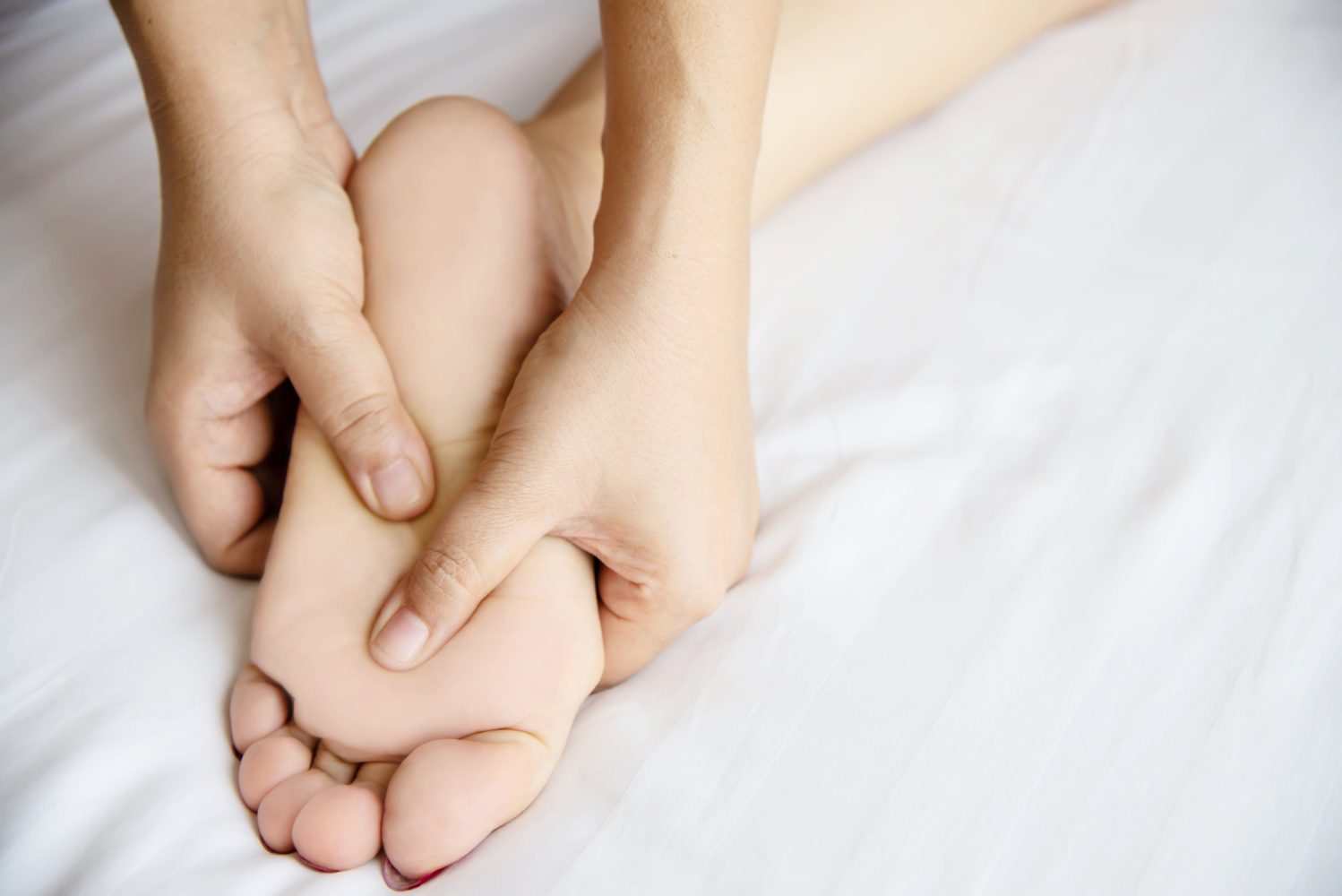Diabetes Related Dermopathy: Causes, Symptoms, & Treatment for Black and Brown Spots on Your Skin
About 50% of people with diabetes experience diabetes-related dermopathy, a condition that causes lesions on the skin. Although the exact cause is unknown, medical experts believe it may be related to a combination of elevated blood sugar and prior trauma to the skin. The condition isn’t dangerous, but it can impact your self-confidence. It may also tell you you must take better care of your health.
This article will review the causes, symptoms, and treatment of diabetes dermopathy so you know what to expect.
What is Diabetes Dermopathy?
Also called shin spots or pigmented preorbital patches, diabetes-related dermopathy appears as small pink, reddish, or brown spots on the skin, typically 1-2.5 centimeters in size. They can affect people with Type 1 or Type 2 diabetes.
The condition typically appears as dermopathy diabetes dark spots on legs, with the lower legs being the most affected areas. However, they can also occur on the arms or thighs.
The lesions don’t itch or ooze and are not painful, but you may take them as a sign that you need to pay more attention to your health. They are commonly linked to other diabetes-related conditions, such as kidney, eye, and nerve damage.
What Causes Black Spots on the Bottom of Feet?
Although medical experts have deduced that dermopathy is related to diabetes, they are unclear of the underlying cause. Some suspect that it may be more likely to occur in those who have experienced prior trauma to the skin.
People with diabetes often have poor circulation, which can reduce the body’s wound-healing abilities. It’s possible that wounds don’t heal properly, leading to the future appearance of diabetic black spots on feet. There may also be a relation between dermopathy and nerve and blood vessel damage, which tends to be prevalent in diabetics.
Who is at Risk of Black Spots Diabetes?
Diabetic dermopathy is more likely to affect people with diabetes mellitus as opposed to gestational diabetes. It is also common in men, individuals over 50, and those who have had the condition for a long time.
What are the Symptoms of Diabetes-Related Dermopathy?
People with diabetes-related dermopathy may experience the following symptoms:
- Pink, reddish, or brown spots that are round or oval-shaped and typically not more than 3 centimeters in diameter
- Spots may become scaly or slightly indented
- The condition typically occurs on the shins but may also appear on other parts of the body, like the arms and upper legs
- Bilateral, meaning the condition will appear on both arms or legs
The condition can last many months and will begin to look like age spots in time.
How is Diabetes Dermopathy Diagnosed?
If you notice what you suspect may be dermopathy diabetes red spots on your legs, you may want to see a doctor to find out what’s causing the condition. The doctor will ask you about your medical history to determine the cause. They may also perform a biopsy and additional tests to rule out other skin conditions.
Although the condition is common in people with long-term diabetes, it may also appear as dermopathy pre diabetes shin spots. The symptoms should warn you that you should make lifestyle changes, or diabetes may occur. Pre-diabetes is often accompanied by symptoms like:
- Frequent thirst
- Frequent urination
- Fatigue
- Blurry vision
- Weight loss
- Tingling in the extremities
What is Diabetes Dermopathy Treatment?
There is no specific treatment for dark spots from diabetes. However, some medical professionals suggest following a healthy diet will improve diabetes symptoms, including skin conditions.
If the rash gets scaly, you may apply moisturizer to reduce dryness. Some health experts feel moisturizer can also help diabetes dermopathy dark spots on legs fade.
You may also put cosmetic cover-up over brown spots feet diabetes to produce a smoother appearance.

How to Prevent Diabetes-Related Dermopathy
There is no way to prevent diabetes-related dermopathy. However, caring for your health could reduce the risk. Here are some preventative measures to try.
- Check Your Blood Sugar Regularly: Regular blood sugar checks help determine what causes spikes. It can also warn you of emergencies so you can act. It’s best to check your blood sugar after meals and before bedtime.
- Take Your Insulin or Medication: Take your prescribed medications according to the doctor’s orders.
- Schedule Regular Doctor’s Visits: See your doctor regularly to ensure your medications and treatment plan are working for you.
- Exercise Regularly: Regular exercise increases insulin sensitivity, ensuring your body can use insulin effectively, making it easier to manage blood sugar.
- Follow a Healthy Diet: Adopt a healthy diet, which generally means eating many fruits and vegetables and avoiding sugar and refined grains.
- Keep Your Legs Protected: Many medical professionals believe diabetic dermopathy may be related to prior skin trauma. Therefore, you should protect your legs and other areas where dermopathy is likely to occur by using protective gear when engaging in strenuous physical activity.
- Stop Smoking: Smoking increases blood sugar and contributes to blood vessel damage, insulin resistance, poor wound healing, and infection risk. If you smoke, talk to your doctor about cessation methods.
- Manage Stress: Chronic stress also increases blood sugar and insulin resistance. Integrate stress-relieving activities into your routine to reduce your diabetes symptoms and risk.
When to See a Doctor
It’s always a good idea to see a doctor if you are experiencing black spots diabetes. If you have not been diagnosed with diabetes, the rash may indicate you are prediabetic. People with diabetes should get dermopathy checked out to ensure their condition isn’t worsening.
Those who are not diabetic or at risk may also want to see a doctor to ensure the condition is not dangerous. For example, some people could confuse a rash with melanoma.
Diabetic Dermopathy vs. Foot Ulcers
Diabetic dermopathy isn’t the only skin issue likely to appear on the lower extremities of people with diabetes. Diabetics are also prone to foot ulcers.
Foot ulcers begin with a foot wound, such as a corn, callus, or blister. Diabetics may not notice these wounds because they often have neuropathy, which reduces feeling in the feet. If left untreated, they can develop into foot ulcers, become infected, and lead to a need for amputation. Some infections are even fatal.
Foot ulcers are much more dangerous than diabetic dermopathy, and it’s essential to understand the distinction between them. Here are some to take note of:
- Size: Dermopathy lesions are small, while ulcers vary in size.
- Appearance: Lesions are flat and scaly, whereas ulcers are crater-like wounds that may expose tissue and bone.
- Color: The color of both lesions and ulcers can range from pink to red to brown.
- Location: Ulcers typically occur on the foot, while lesions usually appear on the leg. However, both can appear on the foot, leg, or other parts of the body.
Diabetics should also understand the difference between dermopathy and blisters, corns, and calluses, as these foot wounds have the potential to develop into ulcers. Play it safe by seeing a doctor if you notice any anomalies in your foot and leg area. Check your feet regularly, looking for wounds and other issues, so you can get them checked out before they escalate.
Feetsee Prevents Complications from Foot Wounds
Foot wounds can be dangerous to diabetics, but Feetsee has a solution.
Feetsee detects foot issues before they develop into ulcers. It monitors foot temperature. If spikes are detected, signaling inflammation that may be linked to a foot wound, it sends an alert to your doctor so they can start care immediately, before things get worse.
Visit us online to learn more about our unique device. And follow recommended lifestyle choices to prevent diabetes and related conditions.
FAQs
Is diabetic dermopathy contagious?
No, diabetic dermopathy is not contagious. You can not catch it from someone else or spread it to another person.
How long does diabetic dermopathy last?
The spots typically fade and completely disappear in 12-24 months, although some stay on the skin indefinitely. New spots can also appear as old ones fade.
Can cosmetic procedures treat diabetic dermopathy?
Cosmetic procedures may treat diabetic dermopathy. For example, laser therapy may reduce the appearance of spots and promote blood flow to the area. Glycolic peels, topical ureas, and retinoids can also help spots fade by exfoliating the skin.
However, the long-term effects of these treatments are unclear and should be discussed with a medical professional.
References:
https://www.sciencedirect.com/science/article/abs/pii/S0168822797001198
https://www.healthline.com/health/diabetes/diabetic-dermopathy
https://www.pcds.org.uk/clinical-guidance/diabetic-dermopathy

Detect Early, Prevent Amputations
Diabetic foot ulcers (DFUs) lead to significant discomfort, pain, numerous amputations, and billions of dollars in healthcare costs each year.
